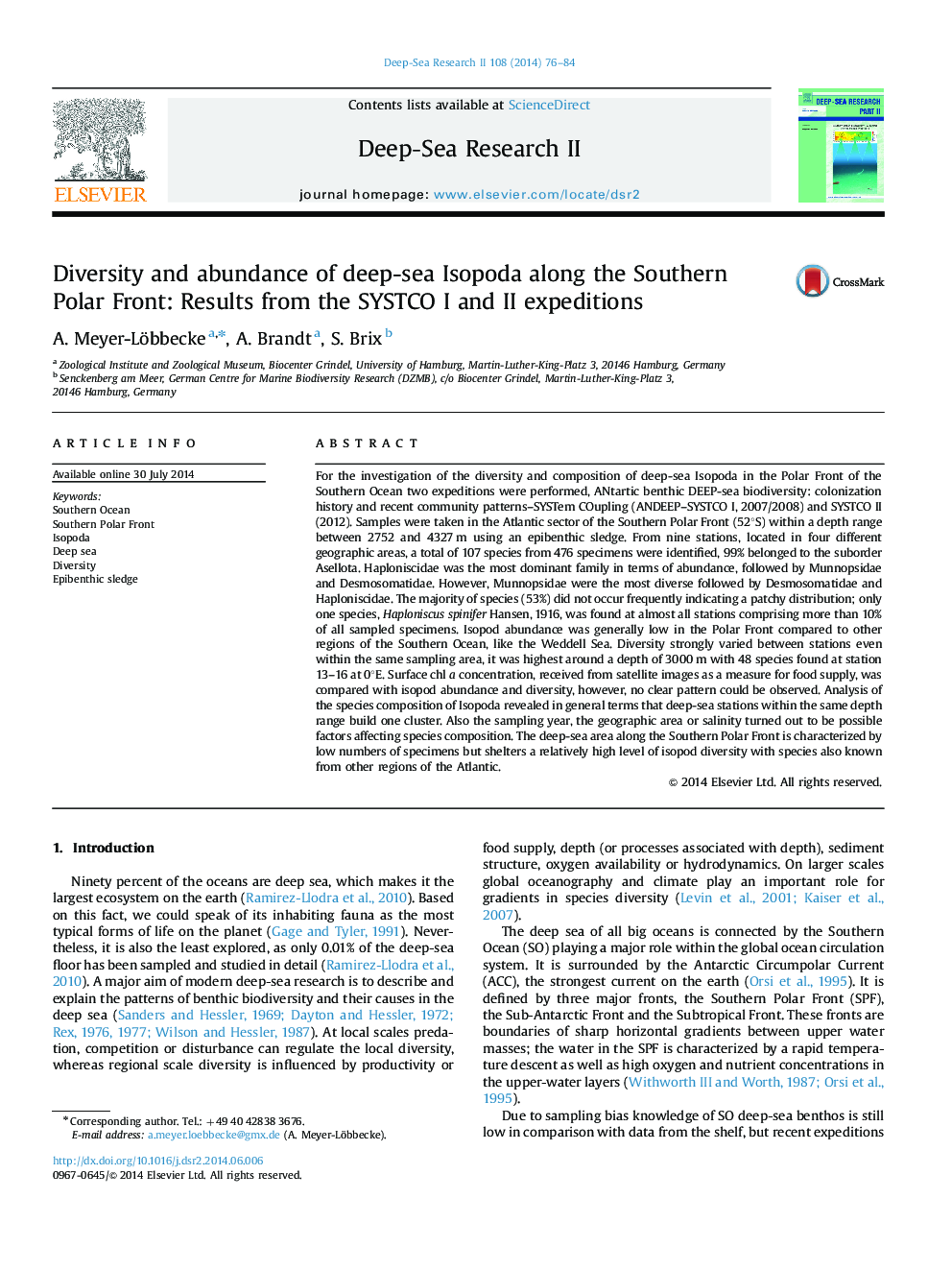| کد مقاله | کد نشریه | سال انتشار | مقاله انگلیسی | نسخه تمام متن |
|---|---|---|---|---|
| 4536317 | 1626432 | 2014 | 9 صفحه PDF | دانلود رایگان |

For the investigation of the diversity and composition of deep-sea Isopoda in the Polar Front of the Southern Ocean two expeditions were performed, ANtartic benthic DEEP-sea biodiversity: colonization history and recent community patterns–SYSTem COupling (ANDEEP–SYSTCO I, 2007/2008) and SYSTCO II (2012). Samples were taken in the Atlantic sector of the Southern Polar Front (52°S) within a depth range between 2752 and 4327 m using an epibenthic sledge. From nine stations, located in four different geographic areas, a total of 107 species from 476 specimens were identified, 99% belonged to the suborder Asellota. Haploniscidae was the most dominant family in terms of abundance, followed by Munnopsidae and Desmosomatidae. However, Munnopsidae were the most diverse followed by Desmosomatidae and Haploniscidae. The majority of species (53%) did not occur frequently indicating a patchy distribution; only one species, Haploniscus spinifer Hansen, 1916, was found at almost all stations comprising more than 10% of all sampled specimens. Isopod abundance was generally low in the Polar Front compared to other regions of the Southern Ocean, like the Weddell Sea. Diversity strongly varied between stations even within the same sampling area, it was highest around a depth of 3000 m with 48 species found at station 13–16 at 0°E. Surface chl a concentration, received from satellite images as a measure for food supply, was compared with isopod abundance and diversity, however, no clear pattern could be observed. Analysis of the species composition of Isopoda revealed in general terms that deep-sea stations within the same depth range build one cluster. Also the sampling year, the geographic area or salinity turned out to be possible factors affecting species composition. The deep-sea area along the Southern Polar Front is characterized by low numbers of specimens but shelters a relatively high level of isopod diversity with species also known from other regions of the Atlantic.
Journal: Deep Sea Research Part II: Topical Studies in Oceanography - Volume 108, October 2014, Pages 76–84